A Method for Maintaining a Unique Kurume Kasuri Pattern of Woven Textile Classified by EfficientNet by Means of LightGBM-Based Prediction of Misalignments
Abstract
:1. Introduction
2. Related Research Works
3. Proposed Method
3.1. Example of Kurume Kasuri
3.2. Classification Method
3.3. Prediction Method
4. Experiment
4.1. Data Used
4.2. Results
- (1)
- Set the initial threshold value to the height of the actual pattern obtained from the data used: 36 pixels + 10 = 46 pixels;
- (2)
- Create a pattern, determine the height of the circumscribed rectangle, and perform one-step-ahead prediction using the LightGBM model;
- (3)
- If the predicted value is greater than or equal to the threshold:
- (4)
- If the height of the circumscribed rectangle of the pattern created in step (3) exceeds the current threshold three times in total:
- (5)
- Repeat the above process 500 times and use the threshold value at which the threshold no longer decreases as the final threshold.
- (1)
- Set the threshold to 41;
- (2)
- Create a pattern and determine the height of the circumscribed rectangle;
- (3)
- If the height of the circumscribed rectangle is greater than or equal to the threshold:
- (4)
- Repeat the above process 100 times.
- (1)
- Set the threshold to 41;
- (2)
- Create a pattern, determine the height of the circumscribed rectangle, and perform one-step-ahead prediction using the LightGBM model;
- (3)
- If the predicted value is greater than or equal to the threshold:
- (4)
- Repeat the above process 100 times.
5. Conclusions
6. Future Research Works
Author Contributions
Funding
Institutional Review Board Statement
Informed Consent Statement
Data Availability Statement
Acknowledgments
Conflicts of Interest
References
- Nakamura, K. History of Kurume Kasuri. J. Jpn. Inst. Text. Technol. 2005, 61, 152–156. [Google Scholar]
- Uchiyama, T. Demand structure analysis of traditional craft Kurume Kasuri. Economics 2020, 24, 33–52. [Google Scholar]
- Shimazoe, J.; Arai, K.; Oda, M.; Oh, J. Method for 1/f Fluctuation Component Extraction from Images and Its Application to Improve Kurume Kasuri Quality Estimation. Int. J. Adv. Comput. Sci. Appl. 2022, 13, 465–471. [Google Scholar] [CrossRef]
- Mori, T. Visual evaluation of lace patterns using neural networks. J. Jpn. Soc. Home Econ. 2000, 51, 147–156. [Google Scholar]
- Alex, K.; Sutskever, I.; Hinton, G.E. ImageNet classification with deep convolutional neural networks. In Proceedings of the Advances in Neural Information Processing Systems 25 (NIPS 2012), Lake Tahoe, NV, USA, 3–6 December 2012. [Google Scholar]
- Karen, S.; Zisserman, A. Very deep convolutional networks for large-scale image recognition. arXiv 2014, arXiv:1409.1556. [Google Scholar]
- Szegedy, C.; Liu, W.; Jia, Y.; Sermanet, P.; Reed, S.; Anguelov, D.; Erhan, D.; Vanhoucke, V.; Rabinovich, A. Going deeper with convolutions. In Proceedings of the IEEE Conference on Computer Vision and Pattern Recognition, Boston, MA, USA, 7–12 June 2015. [Google Scholar]
- James, B.; Yamins, D.; Cox, D.D. Hyperopt: A python library for optimizing the hyperparameters of machine learning algorithms. In Proceedings of the 12th Python in Science Conference, Austin, TX, USA, 9–24 June 2013. [Google Scholar]
- Authors, T.G. GPyOpt: A Bayesian Optimization Framework in Python. 2016. Available online: http://github.com/SheffieldML/GPyOpt (accessed on 23 July 2024).
- Ali, M. PyCaret: An Open Source, Low-Code Machine Learning Library in Python. Available online: https://www.pycaret.org (accessed on 23 July 2024).
- Akiba, T.; Sano, S.; Yanase, T.; Ohta, T.; Koyama, M. Optuna: A next generation hyperparameter optimization framework. In Proceedings of the the 25th ACM SIGKDD International Conference on Knowledge Discovery & Data Mining, Anchorage, AK, USA, 4–8 August 2019. [Google Scholar]
- Arai, K.; Shimazoe, J.; Oda, M. Method for Hyperparameter Tuning of Image Classification with PyCaret. Int. J. Adv. Comput. Sci. Appl. 2023, 14, 276–282. [Google Scholar] [CrossRef]
- Shashank, S.; Bansode, A.; Salim, A. A comparative study of hyper-parameter optimization tools. In Proceedings of the 2021 IEEE Asia-Pacific Conference on Computer Science and Data Engineering (CSDE), Brisbane, Australia, 8–10 December 2021. [Google Scholar]
- Chen, T.; Guestrin, C. Xgboost: A scalable tree boosting system. In Proceedings of the 22nd ACM SIGKDD International Conference on Knowledge Discovery and Data Mining, San Francisco, CA, USA, 13–17 August 2016. [Google Scholar]
- Ke, G.; Meng, Q.; Finley, T.; Wang, T.; Chen, W.; Ma, W.; Ye, Q.; Liu, T.Y. Lightgbm: A highly efficient gradient boosting decision tree. In Proceedings of the Advances in Neural Information Processing Systems 30 (NIPS 2017), Long Beach, CA, USA, 4–9 December 2017. [Google Scholar]
- Zhang, Y.; Zhu, C.; Wang, Q. LightGBM-based model for metro passenger volume forecasting. IET Intell. Transp. Syst. 2020, 14, 1815–1823. [Google Scholar] [CrossRef]
- Cao, Q.; Wu, Y.; Yang, J.; Yin, J. Greenhouse Temperature Prediction Based on Time-Series Features and LightGBM. Appl. Sci. 2023, 13, 1610. [Google Scholar] [CrossRef]
- Makridakis, S.; Spiliotis, E.; Assimakopoulos, V. M5 accuracy competition: Results, findings, and conclusions. Int. J. Forecast. 2022, 38, 1346–1364. [Google Scholar] [CrossRef]
- Otsu, N. Automatic threshold selection method based on discriminant and least squares criterion. IEICE Trans. Fundam. Electron. Commun. Comput. Sci. 1980, 63, 349–356. [Google Scholar]
- Zhang, H.; Cisse, M.; Dauphin, Y.N.; Lopez-Paz, D. mixup: Beyond empirical risk minimization. arXiv 2017, arXiv:1710.09412. [Google Scholar]
- Goodfellow, I.; Pouget-Abadie, J.; Mirza, M.; Xu, B.; Warde-Farley, D.; Ozair, S.; Courville, A.; Bengio, Y. Generative Adversarial Nets. In Proceedings of the Advances in Neural Information Processing Systems 27 (NIPS 2014), Montreal, QC, Canada, 8–13 December 2014. [Google Scholar]
- Shimazoe, J.; Arai, K.; Oda, M.; Oh, J. Classification of pattern deviation in Kurume Kasuri using convolutional neural network. Kurume Inst. Technol. Res. Rep. 2022, 45, 87–94. [Google Scholar]
- Tan, M.; Le, Q. EfficientnetV2: Smaller models and faster training. Int. Conf. Mach. Learn. PMLR 2021, 139, 10096–10106. [Google Scholar]
- Lin, M.; Chen, Q.; Yan, S. Network in network. arXiv 2013, arXiv:1312.4400. [Google Scholar]
- Shimazoe, J.; Arai, K.; Oda, M. Method for Hyperparameter Tuning of EfficientNetV2-based Image Classification by Deliberately Modifying Optuna Tuned Result. Int. J. Adv. Comput. Sci. Appl. 2023, 14, 463–468. [Google Scholar] [CrossRef]
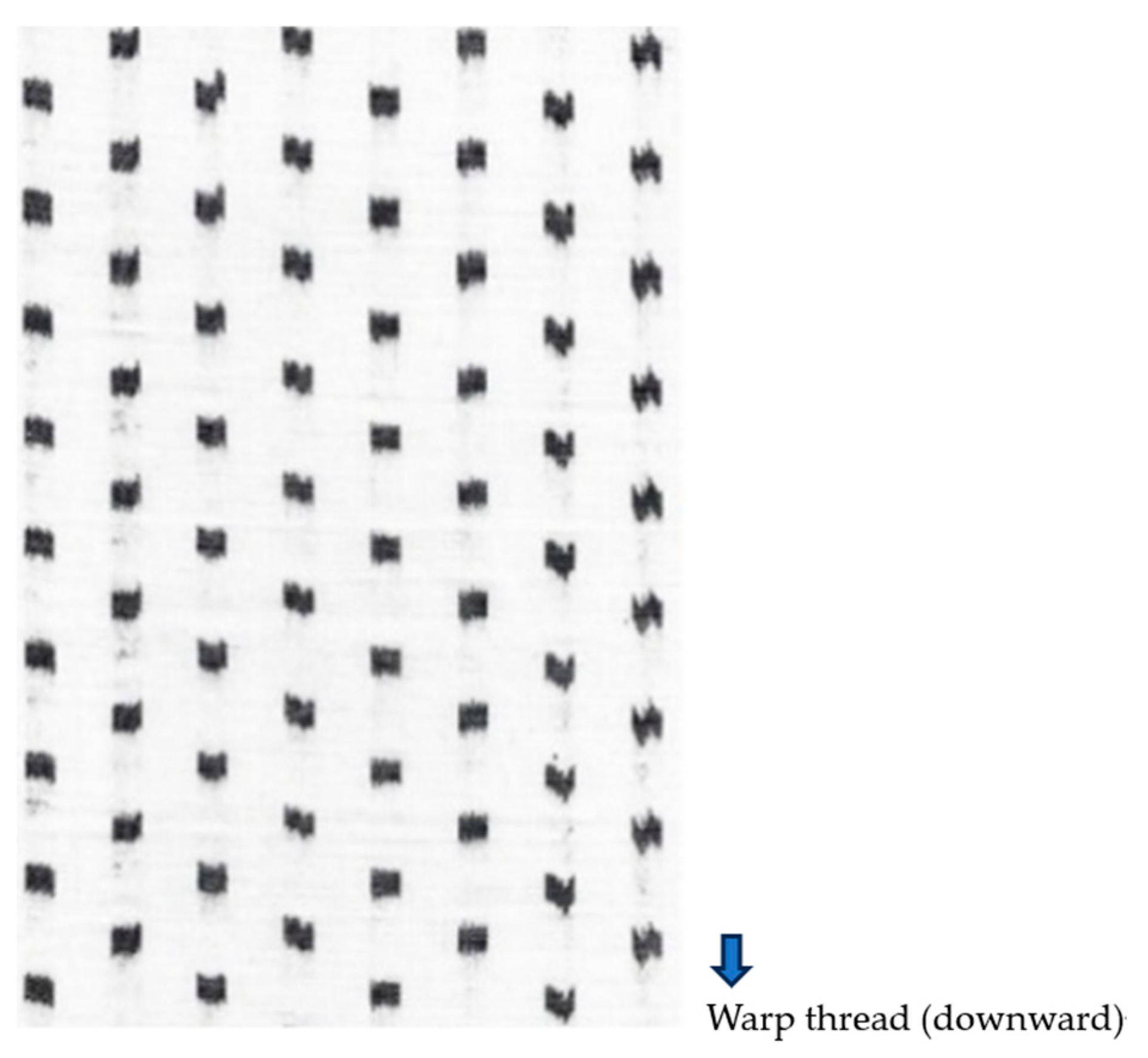
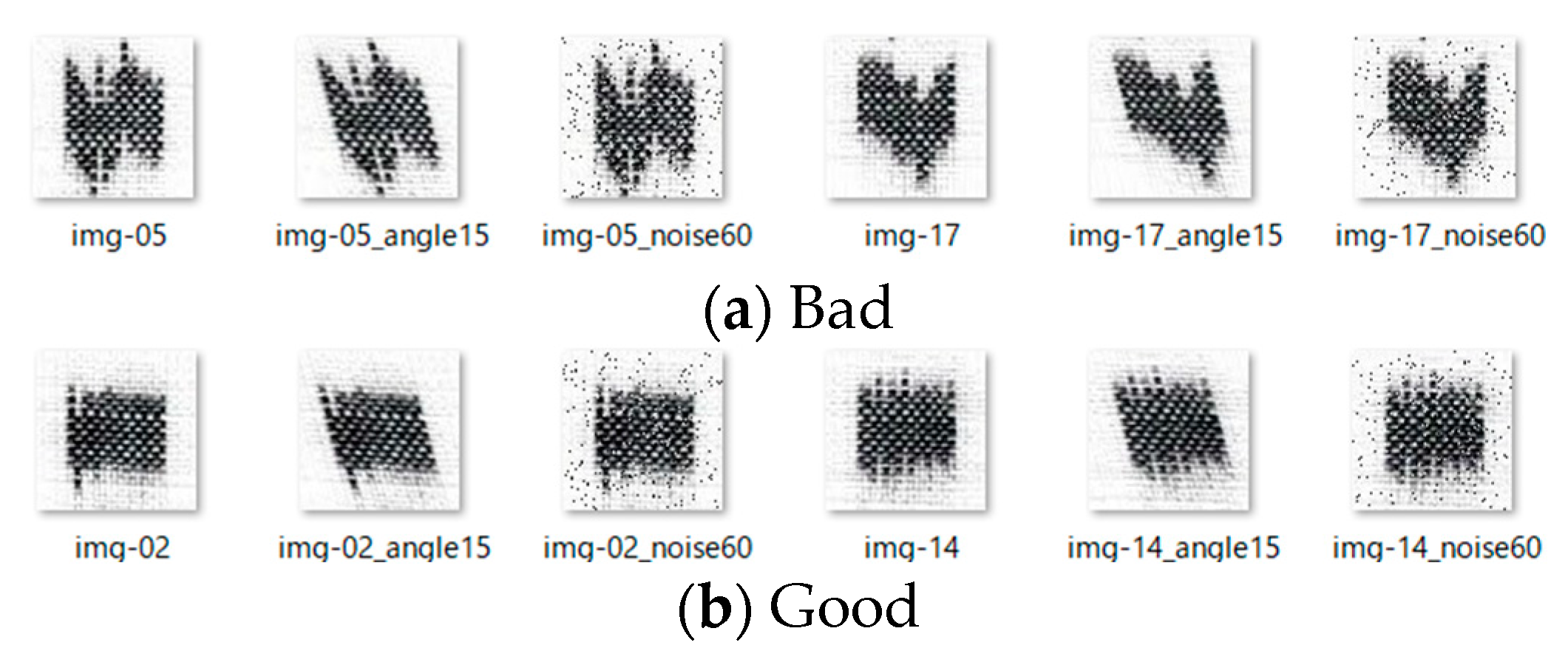
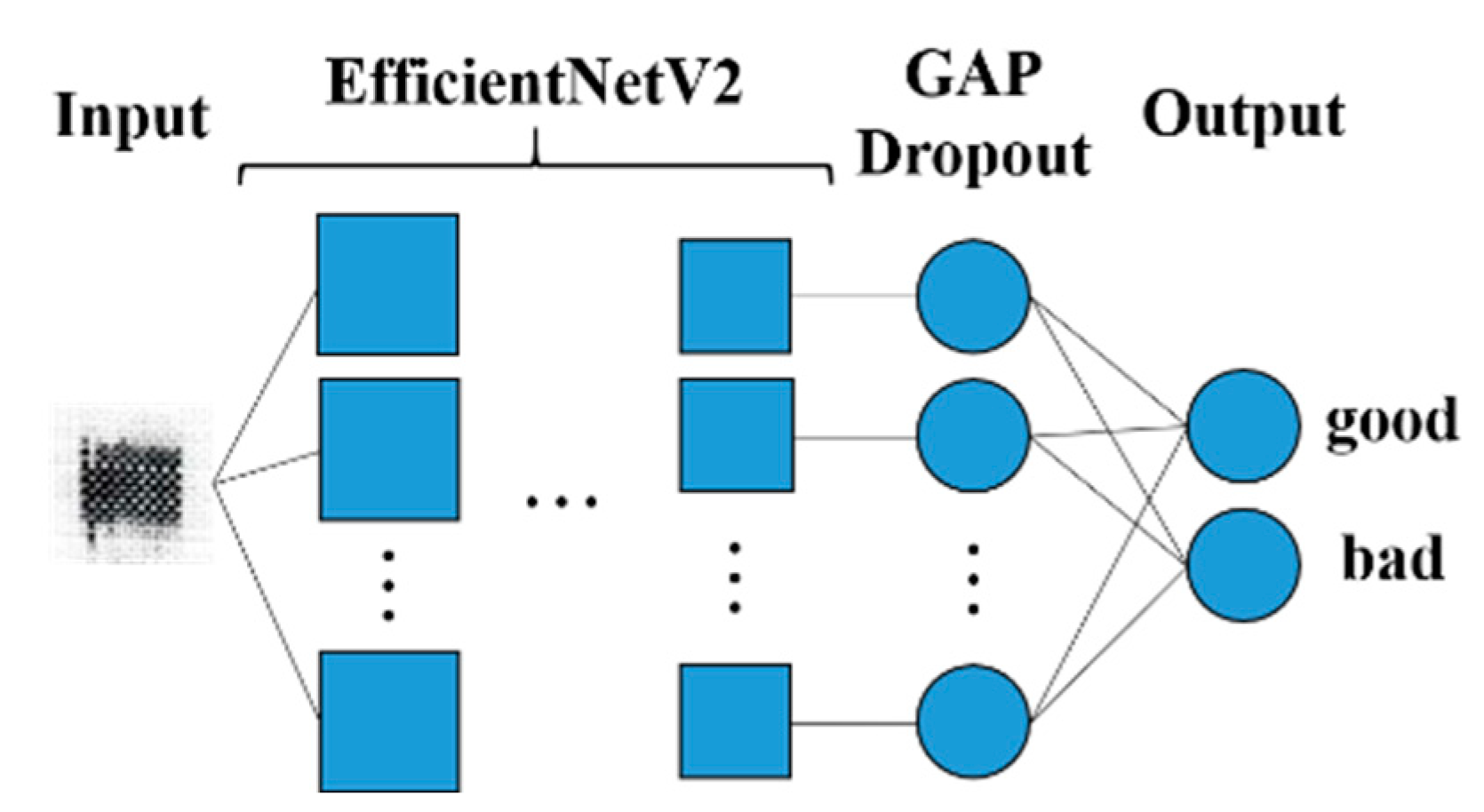



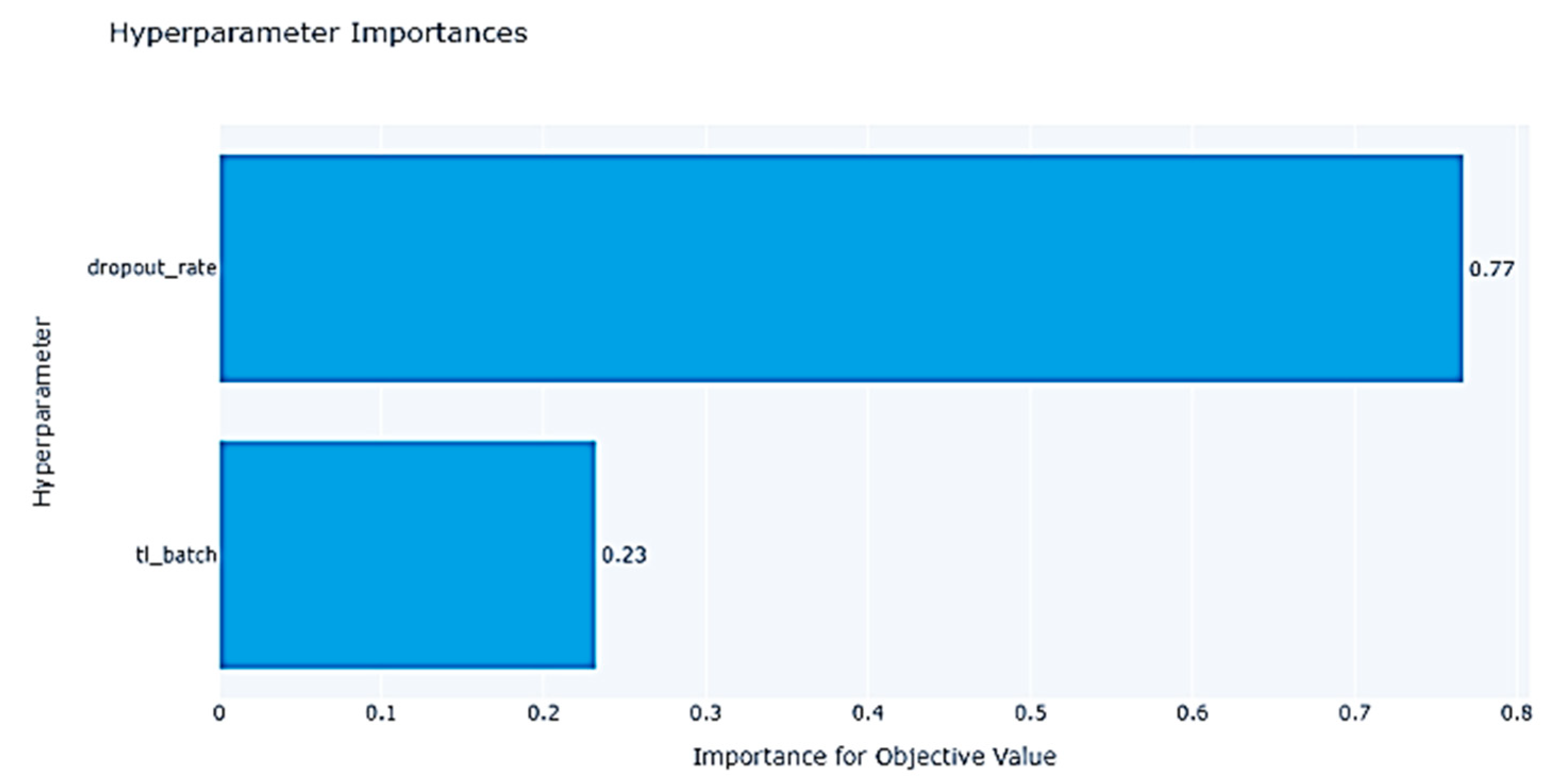



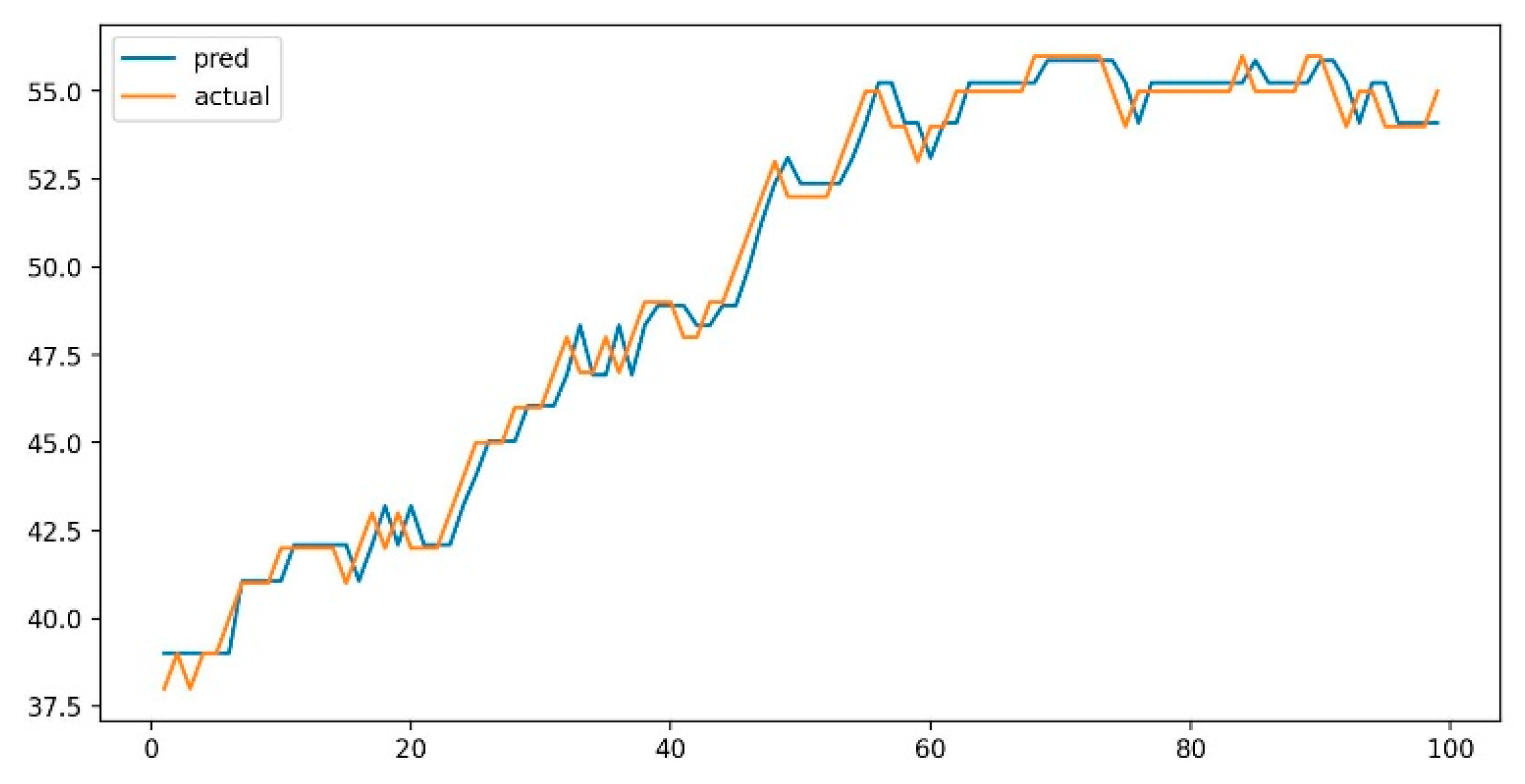


| Manual | Optuna 1 | |
|---|---|---|
| Dropout Rate | 0.5 | 0.129 [0~0.5] |
| Batch Size | 16 | 32 [16, 32, 64] |
| Accuracy | 76.67% | 90% |
| Manual | Optuna 1 | |
|---|---|---|
| Dropout Rate | 0.5 | 0.124 [0~0.5] |
| Learning Rate | 0.001 | 0.001 [0.001, 0.0005, 0.0001] |
| Epoch (Transfer Learning) | 10 | 15 [10, 15, 20] |
| Batch Size (Transfer Learning) | 16 | 32 [16, 32] |
| Batch Size (Fine-Tuning) | 16 | 32 [16, 32] |
| Accuracy | 50% | 80% |
| Good | Bad | |
|---|---|---|
| Non-prediction | 98 | 2 |
| Prediction | 100 | 0 |
Disclaimer/Publisher’s Note: The statements, opinions and data contained in all publications are solely those of the individual author(s) and contributor(s) and not of MDPI and/or the editor(s). MDPI and/or the editor(s) disclaim responsibility for any injury to people or property resulting from any ideas, methods, instructions or products referred to in the content. |
© 2024 by the authors. Licensee MDPI, Basel, Switzerland. This article is an open access article distributed under the terms and conditions of the Creative Commons Attribution (CC BY) license (https://creativecommons.org/licenses/by/4.0/).
Share and Cite
Arai, K.; Shimazoe, J.; Oda, M. A Method for Maintaining a Unique Kurume Kasuri Pattern of Woven Textile Classified by EfficientNet by Means of LightGBM-Based Prediction of Misalignments. Information 2024, 15, 434. https://doi.org/10.3390/info15080434
Arai K, Shimazoe J, Oda M. A Method for Maintaining a Unique Kurume Kasuri Pattern of Woven Textile Classified by EfficientNet by Means of LightGBM-Based Prediction of Misalignments. Information. 2024; 15(8):434. https://doi.org/10.3390/info15080434
Chicago/Turabian StyleArai, Kohei, Jin Shimazoe, and Mariko Oda. 2024. "A Method for Maintaining a Unique Kurume Kasuri Pattern of Woven Textile Classified by EfficientNet by Means of LightGBM-Based Prediction of Misalignments" Information 15, no. 8: 434. https://doi.org/10.3390/info15080434
APA StyleArai, K., Shimazoe, J., & Oda, M. (2024). A Method for Maintaining a Unique Kurume Kasuri Pattern of Woven Textile Classified by EfficientNet by Means of LightGBM-Based Prediction of Misalignments. Information, 15(8), 434. https://doi.org/10.3390/info15080434






